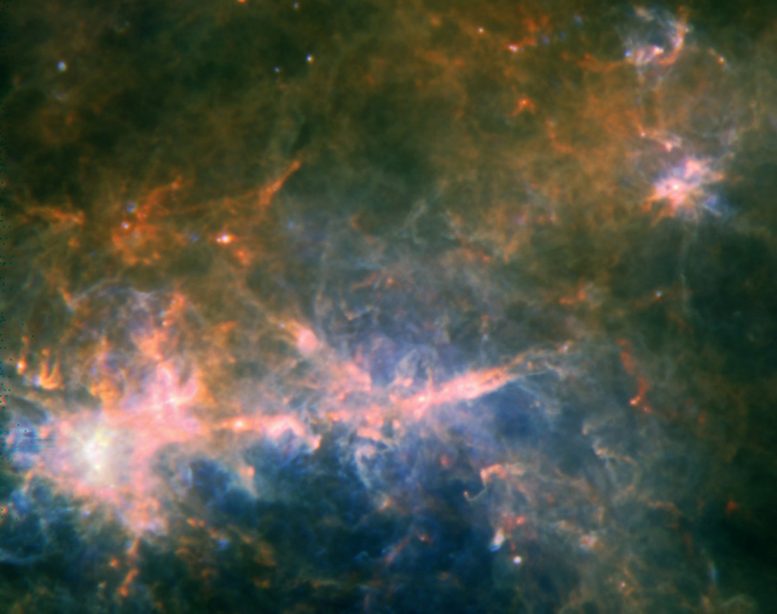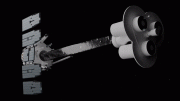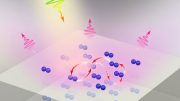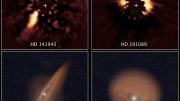
This image showcases G49, a filament with the mass of 80,000 suns, stretching 280 light-years in length but only 5 light-years in diameter. This huge but slender structure of gas and dust is about 18,000 light-years away. Credit: ESA/Herschel/PACS/SPIRE/Ke Wang et al. 2015
This new image of filament G49 reveals how matter is distributed across our Milky Way galaxy.
New images of huge filamentary structures of gas and dust from the Herschel space observatory reveal how matter is distributed across our Milky Way galaxy. Long and flimsy threads emerge from a twisted mix of material, taking on complex shapes.
This image shows a filament called G49, which contains 80,000 suns’ worth of mass. This huge but slender structure of gas and dust extends about 280 light-years in length, while its diameter is only about 5 light-years across.
In this image, longer-wavelength light has been assigned visible colors. Light with wavelengths of 70 microns is blue; 160-micron light is green; and 350-micron light is red. Cooler gas and dust are seen in red and yellow, with temperatures as low as minus 421 degrees Fahrenheit (minus 252 degrees Celsius).
In the densest and coolest clumps, the seeds of new generations of stars are taking shape. A brighter clump of matter is visible at the left tip of the wispy thread.
This filament is about 18,000 light-years away. The image is oriented with northeast toward the left of the image and southwest toward the right.
Herschel is a European Space Agency mission, with science instruments provided by consortia of European institutes and with important participation by NASA. While the observatory stopped making science observations in April 2013, after running out of liquid coolant as expected, scientists continue to analyze its data. NASA’s Herschel Project Office is based at NASA’s Jet Propulsion Laboratory, Pasadena, California. JPL contributed mission-enabling technology for two of Herschel’s three science instruments. The NASA Herschel Science Center, part of the Infrared Processing and Analysis Center at the California Institute of Technology in Pasadena, supports the U.S. astronomical community. Caltech manages JPL for NASA.
Reference: “Large-scale filaments associated with Milky Way spiral arms” by Ke Wang, Leonardo Testi, Adam Ginsburg, C. Malcolm Walmsley, Sergio Molinari and Eugenio Schisano, 11 July 2015, MNRAS.
DOI: 10.1093/mnras/stv735
arXiv: 1504.00647









Be the first to comment on "New Herschel Images Reveal How Matter is Distributed Across Our Milky Way"